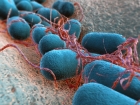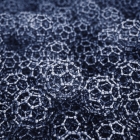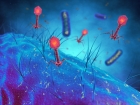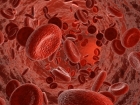Press monitoring
Algal blue light switch control of electrical excitation in plants
12.8.2020 | Press monitoring
Optogenetics denotes the manipulation of cellular processes by light-based biological techniques. An international research team led by the Würzburg plant scientists Rainer Hedrich, Georg Nagel and Dirk Becker has succeeded in applying this method to higher plants: Light impulses can now be used to trigger electrical excitation in plants. "With...
Asian giant hornet complete genome released by the Agricultural Research Service
10.8.2020 | Press monitoring
The first complete genome of the Asian giant hornet has been released by a team of Agricultural Research Service (ARS) scientists. ARS has made the genome available to the research community in AgDataCommons and the National Center for Biotechnology Information, even before publishing the results in a scientific journal to make the data freely...
Team develops peptide that makes drug-resistant bacteria sensitive to antibiotics again
7.8.2020 | Press monitoring
Scientists at Nanyang Technological University, Singapore (NTU Singapore) have developed a synthetic peptide that can make multidrug-resistant bacteria sensitive to antibiotics again when used together with traditional antibiotics, offering hope for the prospect of a combination treatment strategy to tackle certain antibiotic-tolerant...
Testing Chernobyl fungi as a radiation shield for astronauts
5.8.2020 | Press monitoring
A team of researchers from the University of North Carolina at Charlotte and Stanford University has tested the viability of using a type of fungus found growing in some of the destroyed nuclear reactors at the former Chernobyl nuclear power plant site to shield astronauts from radiation. Without the Earth's protective atmosphere and magnetic...
XPrize launches $5-million competition for a cheap, rapid COVID-19 tests
3.8.2020 | Press monitoring
Further expanding the scope of its international competitions designed to solve global problems through technology, XPrize has launched a contest to develop new and improved testing methods for COVID-19. With millions of dollars of prize money up for grabs, the contest aims to usher in new technologies that allow for cheap, wide-spread testing...
Black swan genome could be our secret weapon to combat next pandemic
31.7.2020 | Press monitoring
Scientists have mapped the genome of the black swan in an effort to understand immune responses to the deadly 'bird flu' virus and better protect public health. The University of Queensland team, led by Dr. Kirsty Short and Ph.D. candidate Mr Anjana Karawita, sequenced the genome of black swans, a species particularly susceptible to Highly...
Lego-inspired bioscaffolding could better heal broken bones
29.7.2020 | Press monitoring
Typically made of biocompatible polymers, so-called bioscaffolding is usually either 3D-printed in one solid piece, or injected in the form of a gel that sets into a solid. In either case, once it's in place within a bone injury site, the adjacent bone cells migrate into the scaffolding, essentially "roosting" within its three-dimensional...
Phage therapy shows potential for treating prosthetic joint infections
27.7.2020 | Press monitoring
Bacteriophages, or phages, may play a significant role in treating complex bacterial infections in prosthetic joints, according to new Mayo Clinic research. The findings suggest phage therapy could provide a potential treatment for managing such infections, including those involving antibiotic-resistant microbes. "The treatment for chronic...
Meet Cosmo, a Bull Calf Designed to Produce 75% Male Offspring
24.7.2020 | Press monitoring
Scientists at the University of California, Davis, have successfully produced a bull calf, named Cosmo, who was genome-edited as an embryo so that he’ll produce more male offspring. Using the genome-editing technology CRISPR, researchers can make targeted cuts to the genome or insert useful genes, which is called a gene knock-in. In this case,...
Worlds smallest imaging device can 3D-scan inside your blood vessels
22.7.2020 | Press monitoring
An Australian/German team has developed the world's smallest imaging device, at the thickness of a human hair. It's capable of traveling down the blood vessels of mice, offering unprecedented abilities to 3D-scan the body at microscopic resolutions. To build this miniature endoscope, the team took a fine optical fiber with a diameter of less...































